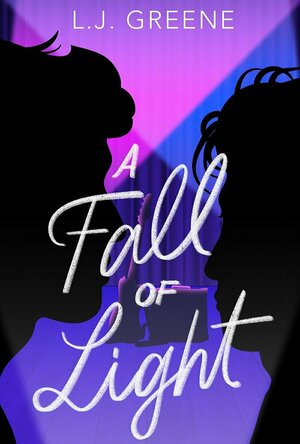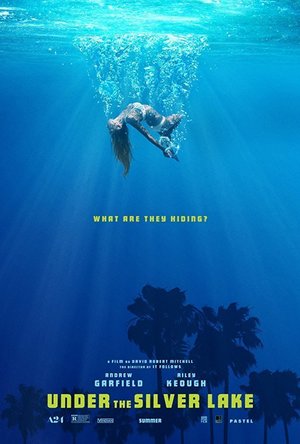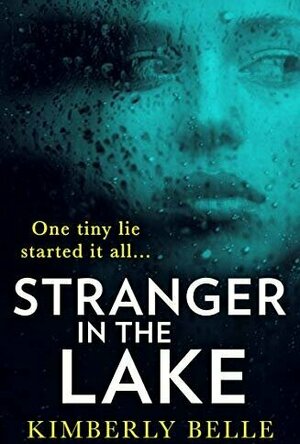Search
Charlie Cobra Reviews (1840 KP) rated Deadly Class in TV
Jul 3, 2020
Teenage Angst, Romance & The Deadly Arts - 8/10
Deadly Class is a tv series airing on SYFY based on the graphic novel created by Rick Remander and Wesley Craig and published by Image Comics. Developed by by Miles Orion Feldscott and produced by the Russo brothers, it's set in a much more macabre late 1980's San Francisco. For me this show has been addicting and is easy to get swept up in the chaos of the halls of Kong's Dominion.
Marcus (Benjamin Wadsworth) is a recently homeless orphan who is inducted into a boarding school of elite assassins called King's Dominion. Recruited off the streets by a gang of students, mainly Saya (Lana Condor), on orders by the headmaster Master Lin (Benedict Wong). He must learn the deadly arts while navigating the perilous halls and vicious social cliques in the free-for-all that is King's Dominion. The institution's a place where the world's top mob and crime families send their children to become better killers and it's graduates include serial killers and government assassins.
This show might not be for everyone but I have found it really enjoyable. It's very cliche at times and definitely has it's standard archetypes but the characters pop with personality especially when the show goes into these really awesome motion comic scenes when delving into their personal backgrounds. The action is definitely top class and keeps the show going but it's not able to always keep that tension when not in the halls or classrooms of the school where anything can happen. By the 1st or 2nd episode you'll know if it's for you. I particularly like how the main group is a bunch of misfits who come together and the progression of the main character. Like i said, I give it a 8/10.
Marcus (Benjamin Wadsworth) is a recently homeless orphan who is inducted into a boarding school of elite assassins called King's Dominion. Recruited off the streets by a gang of students, mainly Saya (Lana Condor), on orders by the headmaster Master Lin (Benedict Wong). He must learn the deadly arts while navigating the perilous halls and vicious social cliques in the free-for-all that is King's Dominion. The institution's a place where the world's top mob and crime families send their children to become better killers and it's graduates include serial killers and government assassins.
This show might not be for everyone but I have found it really enjoyable. It's very cliche at times and definitely has it's standard archetypes but the characters pop with personality especially when the show goes into these really awesome motion comic scenes when delving into their personal backgrounds. The action is definitely top class and keeps the show going but it's not able to always keep that tension when not in the halls or classrooms of the school where anything can happen. By the 1st or 2nd episode you'll know if it's for you. I particularly like how the main group is a bunch of misfits who come together and the progression of the main character. Like i said, I give it a 8/10.
Alex Wolff recommended One Flew Over the Cuckoo's Nest (1975) in Movies (curated)
LoganCrews (2861 KP) rated Divergent (2014) in Movies
Sep 20, 2020
𝘋𝘪𝘷𝘦𝘳𝘵𝘪𝘯𝘨. Unabashed (better) 𝘏𝘶𝘯𝘨𝘦𝘳 𝘎𝘢𝘮𝘦𝘴 ripoff which doesn't just have nothing to say - but worse - it has nothing to say yet *thinks* it has something to say. A fucking terrible metaphor about conformity depicted through surface-level teenage angst and wince-worthy 2014 YA genre tropes while deliberately (and frustratingly) refusing to provide any world-building above routine exposition, but sometimes it's fun! Woodley is pretty crappy but everyone else is solidly engaging, Teller is great as a piece of shit and James is shockingly one of the better 'faceless white beefcake' roles - but of course the winner goes to evil Kate Winslet in full Hillary Clinton mode, pantsuit and all. I fully admit to being enchanted by this movie's stupid little world and it's never unwatchable either, often quite enjoyable - but can we talk about how idiotic of a system this is? You're telling me in order to stop discrimination and foster peace (from some conveniently absent events just known as "the war" [ugh]) they thought it'd be a good idea to make distinctly unconnected factions based on - essentially - a Buzzfeed "What's Your Personality Type" quiz, which aren't allowed to communicate and all of whom evidently hate each other that they then force a bunch of moody TEENAGERS to choose which one they want to be in - the single MOST IMPORTANT AND PERMANENT LIFE DECISION they'll ever make - and AREN'T ALLOWED a single switch EVER (because... reasons, ostensibly you aren't allowed to change as a person); and if they fail or want to choose a different path they just become HOMELESS FOR LIFE. (A sadly close unintentional riff on capitalism, actually). Anyway I like when this gets trippy and when it acts as a slideshow of these supposedly helpful organizations (which don't serve their respective purposes here at all) just start doing a bunch of fucked up things to their new recruits literally from day one but all its non-politics aside I'm sick of when movies like these make the blandest character in the movie not only lead the whole thing, but also make their only discernable personality feature that they're "not like the rest of us". Yeah, no shit they aren't - they're way less interesting.
Debbiereadsbook (1617 KP) rated A Fall of Light in Books
Sep 9, 2023
only ONE thing knocked that star off!
Independent reviewer for Archaeolibrarian, I was gifted my copy of this book.
Greg appears as a side character in a series by Greene. I have not read those books, but I don't feel I missed out on anything by not doing. I'm intrigued by this group, though, and may well go back and read them. *if I can find the time*
I gave this 4 stars, and one thing ONLY knocked that star off.
Single person point of view.
Only Greg gets a say here, and I wanted, so desperately wanted to hear from Louis, at many key points along the way and I don't get him.
That said, it's the only fault I can find with this book.
I loved that Greg knew, deep down, that he wasn't a casual person, and he could never be casual with Louis. Yet he jumped right in with everything. I loved that Greg let Louis keep his secret for as long as he wanted to. He knew it would come out in the end, he just had to bide his time. I hated what Greg's brother was doing to him, I really did. Said brother does get his comeuppence though.
Greg's past is dark and shocking, being made homeless at 16, he did what he had to do to survive. Loved that Louis did NOT hold it against him, even if his own flesh and blood did. Loved that the band supported him doing the solo stuff, to appease his brother, and also that they stood by him.
It's not especially explicit for a MM romance, but I liked that here, it's more about the emotions going through Greg (since we don't get Louis!) than anything else.
Some difficult topics dealt with: religious intervention, conversion therapy, street life and doing what you need to do to survive. Triggers for some, be mindful.
This is the first I've read of Greene's work. Like I said, I'd like, *time allowing* to read the series that Greg first appears in, but if not, I will absolutely read any future books by this author.
4 very VERY good stars
*same worded review will appear elsewhere
Greg appears as a side character in a series by Greene. I have not read those books, but I don't feel I missed out on anything by not doing. I'm intrigued by this group, though, and may well go back and read them. *if I can find the time*
I gave this 4 stars, and one thing ONLY knocked that star off.
Single person point of view.
Only Greg gets a say here, and I wanted, so desperately wanted to hear from Louis, at many key points along the way and I don't get him.
That said, it's the only fault I can find with this book.
I loved that Greg knew, deep down, that he wasn't a casual person, and he could never be casual with Louis. Yet he jumped right in with everything. I loved that Greg let Louis keep his secret for as long as he wanted to. He knew it would come out in the end, he just had to bide his time. I hated what Greg's brother was doing to him, I really did. Said brother does get his comeuppence though.
Greg's past is dark and shocking, being made homeless at 16, he did what he had to do to survive. Loved that Louis did NOT hold it against him, even if his own flesh and blood did. Loved that the band supported him doing the solo stuff, to appease his brother, and also that they stood by him.
It's not especially explicit for a MM romance, but I liked that here, it's more about the emotions going through Greg (since we don't get Louis!) than anything else.
Some difficult topics dealt with: religious intervention, conversion therapy, street life and doing what you need to do to survive. Triggers for some, be mindful.
This is the first I've read of Greene's work. Like I said, I'd like, *time allowing* to read the series that Greg first appears in, but if not, I will absolutely read any future books by this author.
4 very VERY good stars
*same worded review will appear elsewhere
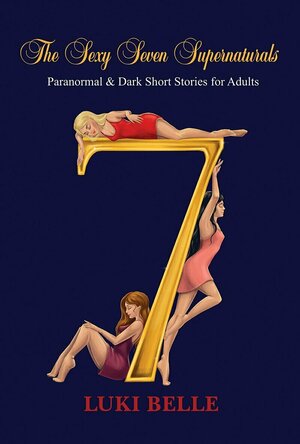
The Sexy Seven Supernaturals
Book
Seven haunting tales of women, young female adults, and an adolescent girl whose lives change...
Fiction Short Stories Fantasy Paranormal Erotica
Chris Sawin (602 KP) rated Under the Silver Lake (2018) in Movies
Jul 6, 2019
In David Robert Mitchell’s (It Follows) Under the Silver Lake, Andrew Garfield portrays a jobless and lethargic young man named Sam. Apart from his obsession with conspiracy theories and finding obscure messages in common pop culture, Sam typically spies on his topless and bird-loving neighbor. He also blatantly ignores the fact that he’s facing eviction in five days for unpaid rent. His current infatuation is a zine entitled Under the Silver Lake, which seems to mirror what’s currently transpiring in Los Angeles. Sam develops a crush on his new neighbor named Sarah (Riley Keough), who seems to disappear without a trace overnight. What begins as an investigation into Sarah’s current whereabouts evolves into something deeply rooted in the peculiar.
There’s a lot to digest with Under the Silver Lake. Not only is the story constructed on finding clues and deciphering the bizarre, but the film itself is also loaded with homage to famous music, film, and people. Nirvana, The Legend of Zelda, Nintendo Power, and Spider-Man are just a few references in the film and that doesn’t cover the blatant influence of films such as Rear Window or 2001: A Space Odyssey. What you have to ask yourself, and this is probably what makes the film so polarizing, is if what lays between the admiration for popular culture a worthwhile experience?
What you can appreciate is Andrew Garfield’s performance. Sam is so bored with his uneventful existence that he tries to find hidden meaning in everyday items. He is basically a stalker fueled by paranoia and consistent lusting of whatever woman is closest to him. When sex isn’t an option for Sam, he masturbates and somehow this becomes a common theme of the film. The first thing you ever pleasured yourself to is suddenly a conversation piece. Garfield has an unusual demeanor as Sam, but never really comes off as creepy. The method in which the story keeps snowballing into something bigger with more and more connections helps Sam’s case. Sam beats the snot out of a kid who keyed a giant penis ejaculating onto the hood of his black GT Mustang and you only seem to like him more because of it.
The fact of the matter is you also become invested in Sam’s discoveries. Despite what you feel about Under the Silver Lake as a film, it’s still unpredictable and intriguing even with its 139-minute duration. With its abrupt camera movements, a kamikaze squirrel, a serial dog killer on the loose, pets named after soda, the discovery of saltines and orange juice being one of the most unique combinations ever, a gory dream sequence, animated zine stories, people barking like dogs, the map on the back of a cereal box being the answer to everything, a seething hatred for the homeless, a way too impressive piano medley, and an almost unrecognizable Topher Grace as a reliable friend, Under the Silver Lake feels like it is overloaded with these overwhelmingly precise details that don’t necessarily lead to anything substantial.
On first watch, it’s impossible to decipher if Under the Silver Lake is destined to be a cult classic or a misguided neo-noir mystery. David Robert Mitchell knows how to introduce elements of comedy, mystery, and drama, but that final product is what leaves you scratching your head. Maybe this gets better with multiple viewings and you find more Easter eggs with each watch or everything connects differently in your head after knowing what direction the story is headed in. In the meantime though, Under the Silver Lake mostly feels like a nearly two and a half hour session of stoner ramblings that can’t decide whether to be Brick, Inherent Vice, or Southland Tales; even The Homeless King feels like a side story lifted from Terry Gilliam’s The Fisher King.
What’s happening directly in Sam’s world isn’t what matters most in Under the Silver Lake. He’s more worried about Sarah and Los Angeles than he is about not having a job or possibly a place to live in a matter of days. The outside world is far more interesting to Sam because it’s that, “The grass is always greener,” kind of mentality. Sam is consumed by Sarah because she is the one woman in the film he doesn’t get to sleep with. Having everlasting discussions of what your topless neighbor’s parrot is saying is far more humorous than revealing anything remotely personal. Becoming entangled in this crazy spider’s web of a conspiracy is far more interesting than living a boring existence. Sam makes the most out of nothing, literally. Under the Silver Lake is this spellbinding enigma of a film that is equally stimulating as it is mystifying.
There’s a lot to digest with Under the Silver Lake. Not only is the story constructed on finding clues and deciphering the bizarre, but the film itself is also loaded with homage to famous music, film, and people. Nirvana, The Legend of Zelda, Nintendo Power, and Spider-Man are just a few references in the film and that doesn’t cover the blatant influence of films such as Rear Window or 2001: A Space Odyssey. What you have to ask yourself, and this is probably what makes the film so polarizing, is if what lays between the admiration for popular culture a worthwhile experience?
What you can appreciate is Andrew Garfield’s performance. Sam is so bored with his uneventful existence that he tries to find hidden meaning in everyday items. He is basically a stalker fueled by paranoia and consistent lusting of whatever woman is closest to him. When sex isn’t an option for Sam, he masturbates and somehow this becomes a common theme of the film. The first thing you ever pleasured yourself to is suddenly a conversation piece. Garfield has an unusual demeanor as Sam, but never really comes off as creepy. The method in which the story keeps snowballing into something bigger with more and more connections helps Sam’s case. Sam beats the snot out of a kid who keyed a giant penis ejaculating onto the hood of his black GT Mustang and you only seem to like him more because of it.
The fact of the matter is you also become invested in Sam’s discoveries. Despite what you feel about Under the Silver Lake as a film, it’s still unpredictable and intriguing even with its 139-minute duration. With its abrupt camera movements, a kamikaze squirrel, a serial dog killer on the loose, pets named after soda, the discovery of saltines and orange juice being one of the most unique combinations ever, a gory dream sequence, animated zine stories, people barking like dogs, the map on the back of a cereal box being the answer to everything, a seething hatred for the homeless, a way too impressive piano medley, and an almost unrecognizable Topher Grace as a reliable friend, Under the Silver Lake feels like it is overloaded with these overwhelmingly precise details that don’t necessarily lead to anything substantial.
On first watch, it’s impossible to decipher if Under the Silver Lake is destined to be a cult classic or a misguided neo-noir mystery. David Robert Mitchell knows how to introduce elements of comedy, mystery, and drama, but that final product is what leaves you scratching your head. Maybe this gets better with multiple viewings and you find more Easter eggs with each watch or everything connects differently in your head after knowing what direction the story is headed in. In the meantime though, Under the Silver Lake mostly feels like a nearly two and a half hour session of stoner ramblings that can’t decide whether to be Brick, Inherent Vice, or Southland Tales; even The Homeless King feels like a side story lifted from Terry Gilliam’s The Fisher King.
What’s happening directly in Sam’s world isn’t what matters most in Under the Silver Lake. He’s more worried about Sarah and Los Angeles than he is about not having a job or possibly a place to live in a matter of days. The outside world is far more interesting to Sam because it’s that, “The grass is always greener,” kind of mentality. Sam is consumed by Sarah because she is the one woman in the film he doesn’t get to sleep with. Having everlasting discussions of what your topless neighbor’s parrot is saying is far more humorous than revealing anything remotely personal. Becoming entangled in this crazy spider’s web of a conspiracy is far more interesting than living a boring existence. Sam makes the most out of nothing, literally. Under the Silver Lake is this spellbinding enigma of a film that is equally stimulating as it is mystifying.

Rooftoppers
Book
This is the winner of the Blue Peter Book Award and the Waterstones Children's Book Prize, and...
Kristy H (1252 KP) rated Stranger in the Lake in Books
Jun 18, 2020
Charlotte and her husband, Paul, live in a small lake town. But their marriage has caused gossip and rumors, when poor Charlotte, who grew up in a trailer park, marries the rich and older Paul. Then Charlotte discovers a body floating in the lake beside their house--in the exact spot where Paul's first wife died. Even worse, Charlotte saw Paul talking to the woman the day before, but he lied to the police about it. Then he disappears into the woods, leaving her to deal with the aftermath. As Charlotte begins digging into her husband's past, she starts wondering how much she can trust him.
"Something very bad has happened, right outside our door. Again."
This was an excellent and easy-to-read book with a compelling plot. I was drawn in by the story from the start and flew through the pages. Belle creates an atmospheric read, with the snow and lake basically appearing as extra characters. We find Charlotte (once "Charlie") pitted against her old best friend, Sam, who is on the police force and believes Paul killed his first wife. And we learn that Paul had a high school friendship with Micah, the son of the police chief, and Jax, who is now homeless and known as the town kook. It is Jax who asked to see Paul the day before the woman is found--and Jax who is lurking around Charlotte's house. Is he threatening her, or trying to warn her of something? And is there truly a chance that Paul killed his first wife? I loved how much this one kept me guessing.
What I found amazing is that Belle is able to take a familiar plot--a younger woman marrying an older guy with a past--and transform it into such a spellbinding thriller. What could come across as trite and stale is instead fascinating and intriguing. Charlotte is an easy-to-like protagonist who didn't seem to make dumb decisions. This can't be said of her husband, who was, frankly, an idiot. I had an inkling early about who might be responsible, but it did nothing to diminish my enjoyment of the story.
If you like your thrillers filled with secrets and lies, the power of family, and featuring a fascinating plot, this one is for you. 4+ stars.
"Something very bad has happened, right outside our door. Again."
This was an excellent and easy-to-read book with a compelling plot. I was drawn in by the story from the start and flew through the pages. Belle creates an atmospheric read, with the snow and lake basically appearing as extra characters. We find Charlotte (once "Charlie") pitted against her old best friend, Sam, who is on the police force and believes Paul killed his first wife. And we learn that Paul had a high school friendship with Micah, the son of the police chief, and Jax, who is now homeless and known as the town kook. It is Jax who asked to see Paul the day before the woman is found--and Jax who is lurking around Charlotte's house. Is he threatening her, or trying to warn her of something? And is there truly a chance that Paul killed his first wife? I loved how much this one kept me guessing.
What I found amazing is that Belle is able to take a familiar plot--a younger woman marrying an older guy with a past--and transform it into such a spellbinding thriller. What could come across as trite and stale is instead fascinating and intriguing. Charlotte is an easy-to-like protagonist who didn't seem to make dumb decisions. This can't be said of her husband, who was, frankly, an idiot. I had an inkling early about who might be responsible, but it did nothing to diminish my enjoyment of the story.
If you like your thrillers filled with secrets and lies, the power of family, and featuring a fascinating plot, this one is for you. 4+ stars.
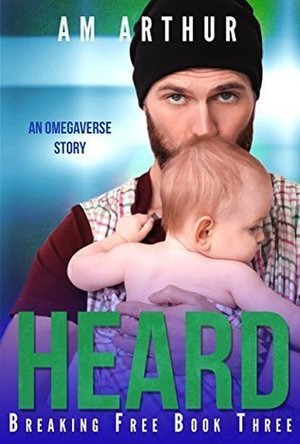
Heard (Breaking Free #3)
Book
An omega who can’t speak meets an alpha who won’t listen…. Karter Jenks is a first-year...
MPreg Omegaverse M_M Romance

Wesley (The Son Series Book 1)
Book
~Wesley~ Yeah, I don’t trust them. Who are they? The family who takes me in after they catch...
romance contemporary African American African-American adult fiction



